|
 Dwight Peck's personal website Dwight Peck's personal website
Tuscany in the off-season
Arezzo and the neighborhood in February and early March, 2015
You may not find this terribly rewarding unless you're included here, so this is a good time for casual and random browsers to turn back before they get too caught up in the sweep and majesty of the proceedings and can't let go.
Arezzo was at the top of our list when we based ourselves in Lucca a few months ago, but we never made it this far south. So here we are now, based in Arezzo this time, with lots to see roundabout.
Siena: scenes of the Cathedral and the Campo (II)
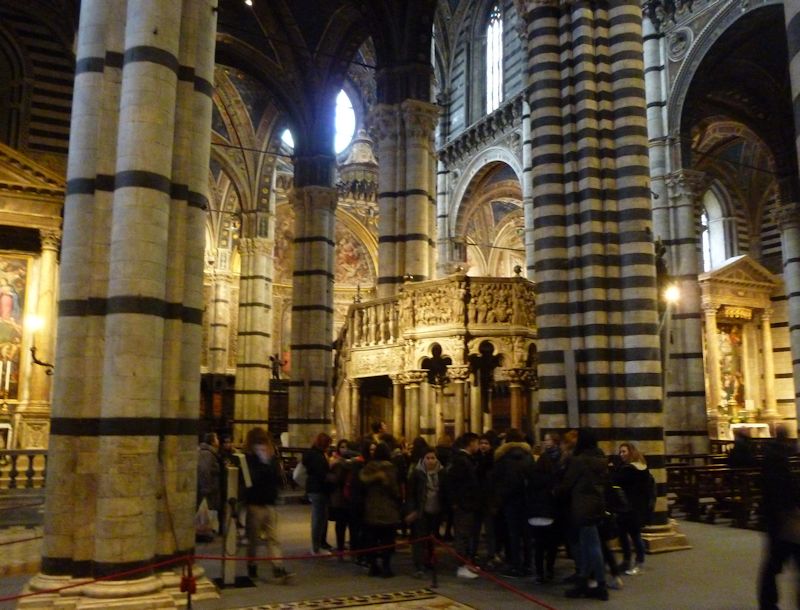
We're still wandering around the Cattedral di Siena, and no wonder; it looks like we'll be lucky to find our way out of this maze again. In any case, that's the famous Pisano Pulpit.
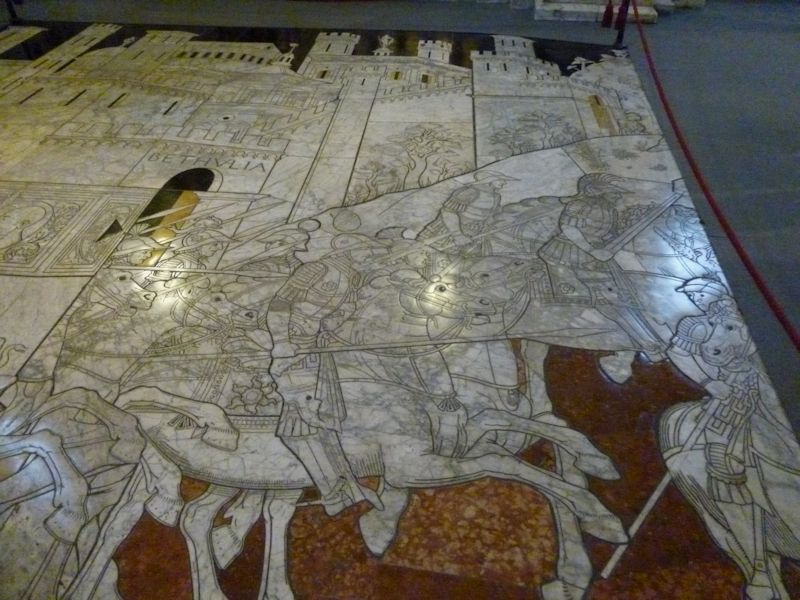
Detail from the Liberation of Bethulia, made in 1473 possibly by Urbano da Cortona; Bethulia is the biblical city where Judith chopped off General Holofernes' head.
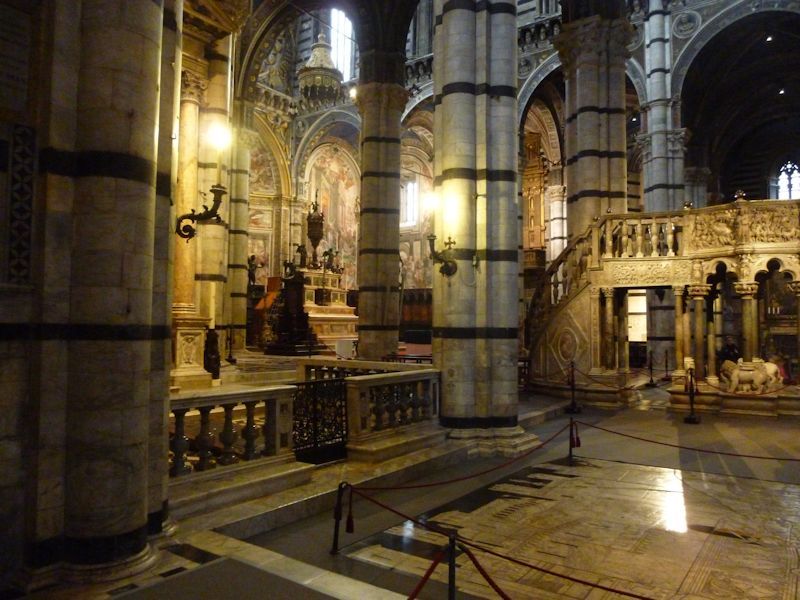
The pulpit again, with the high altar and choir behind
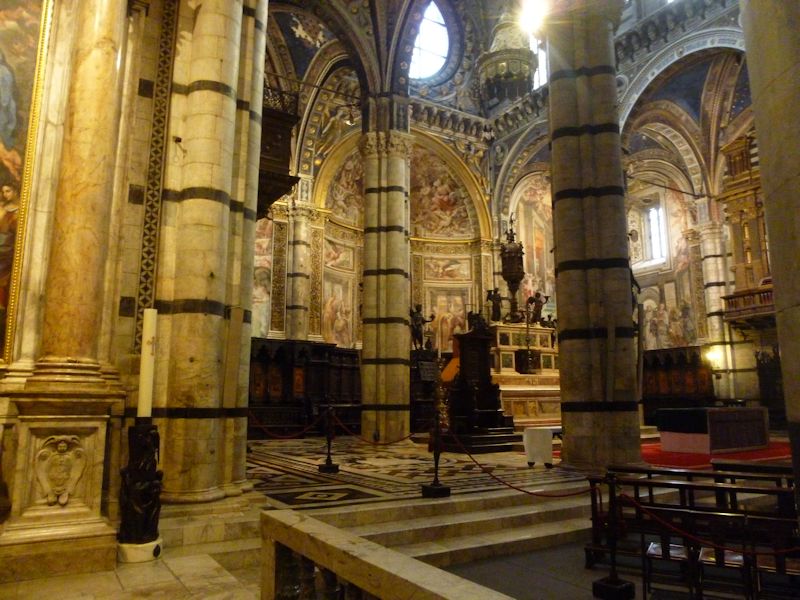
The apse end with presbytery, chancel, and altar
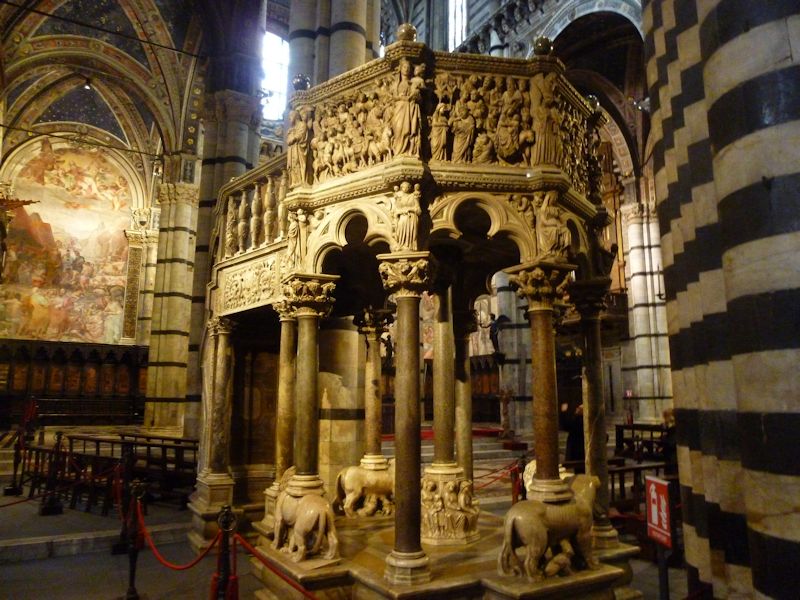
The famous pulpit, deservedly so. It was created by Nicola Pisano and others between 1265 and 1268 and is focused on all the usual medieval Christian preoccupations. Seven scenes of the life of Christ have their place, as do the Apostles and Prophets, but the funniest parts have to do with Judgment Day.
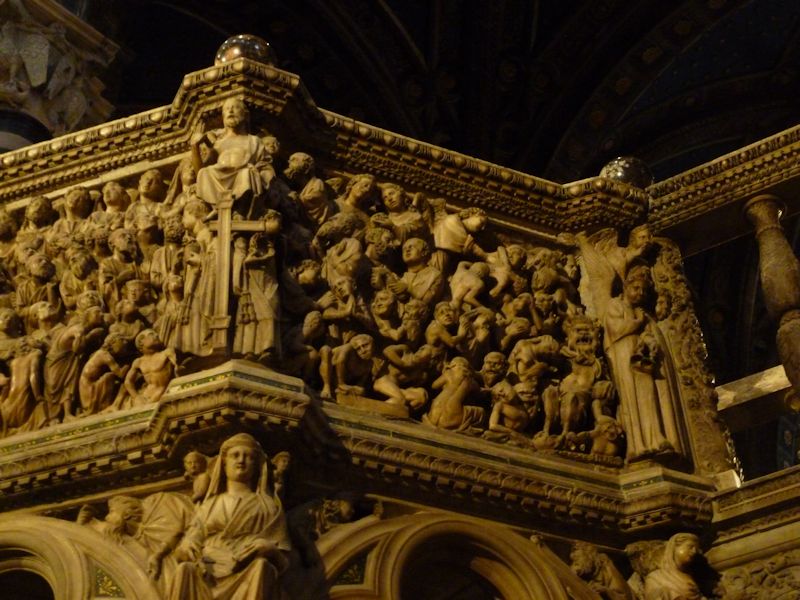
At the Last Judgment, the virtuous saved souls are on the left (Christ's right) and boring, whilst the Newly Damned are lamenting all over the place on the right. Just a Gentle Reminder.
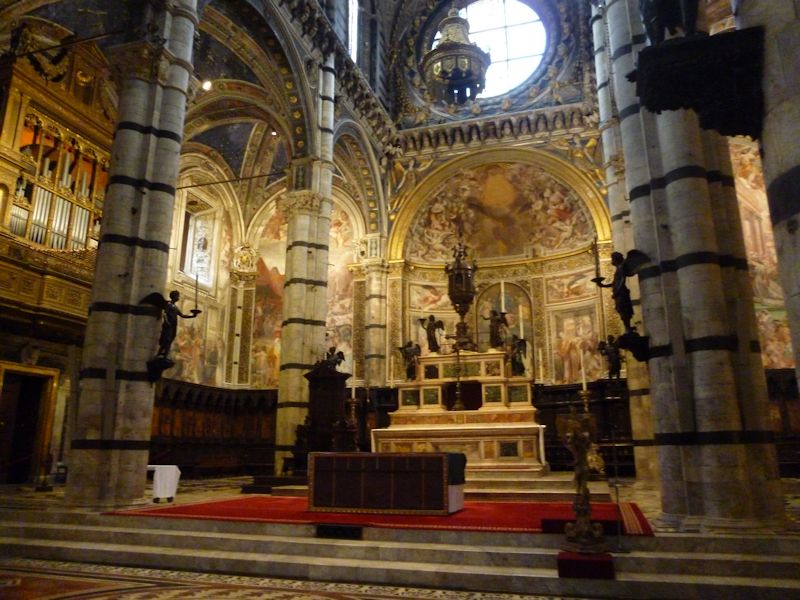
The marble altar was created in 1532 by Baldassare Peruzzi, but the bronze ciborium sitting on top of it is by the Sienese painter and sculptor Vecchietta, 1472.
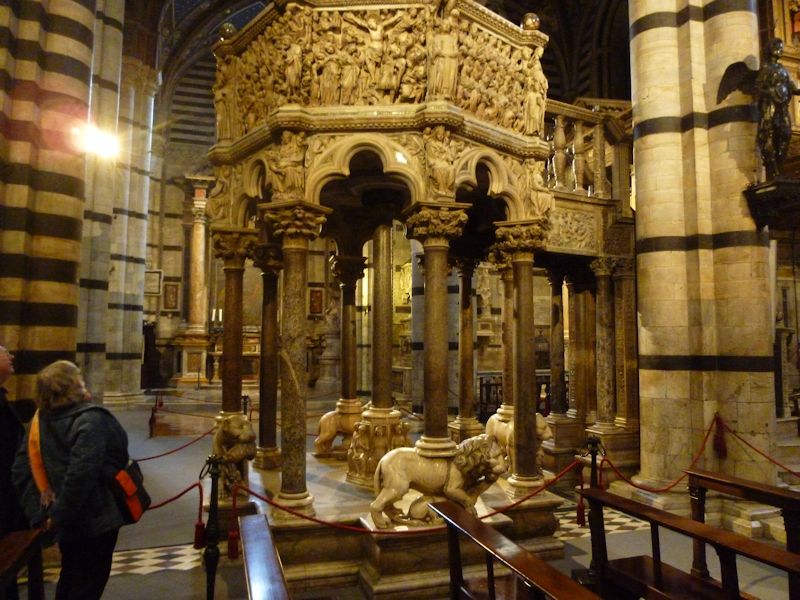
The Pisano Pulpit
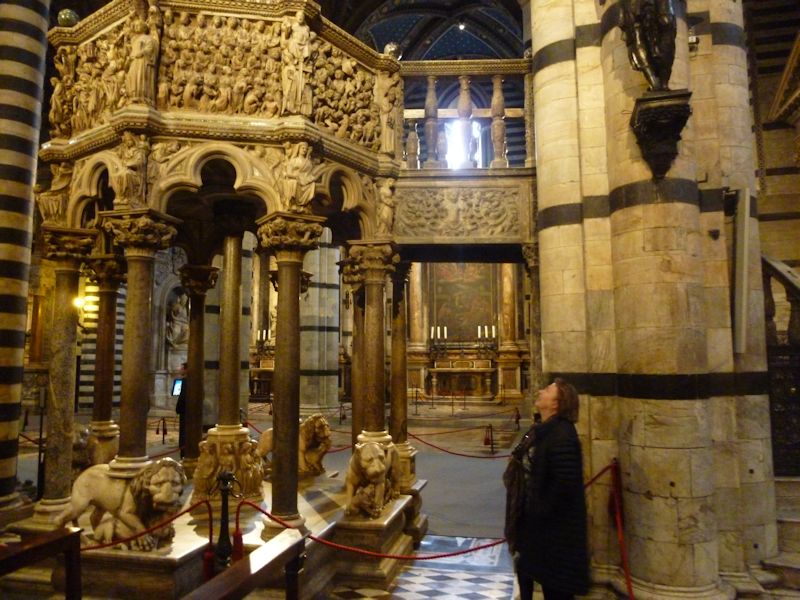
Kristin being reminded of the downside of the Last Judgment
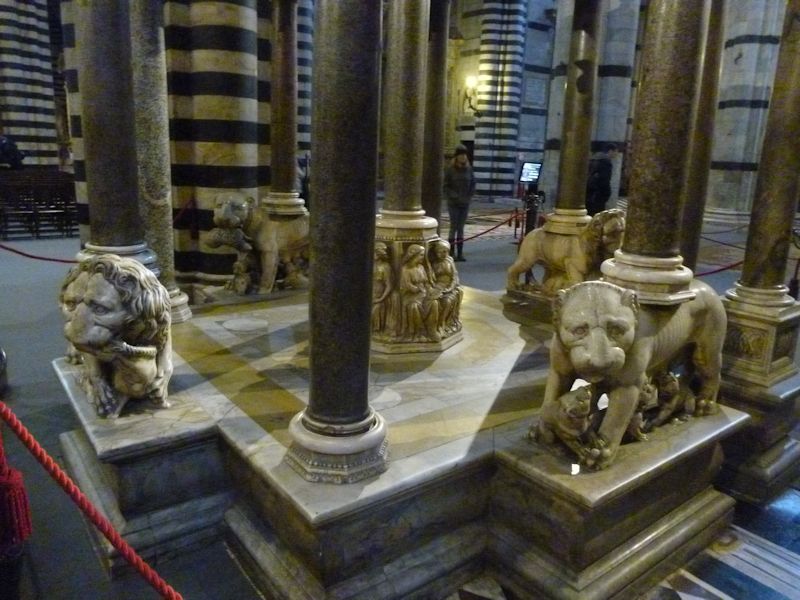
The base of the Pisano Pulpit, with lions supporting four of the eight outer columns and the Liberal Arts holding up the centre, as usual

We've found our way out and are headed down the treacherous marble steps in the rain on the stairway alongside.
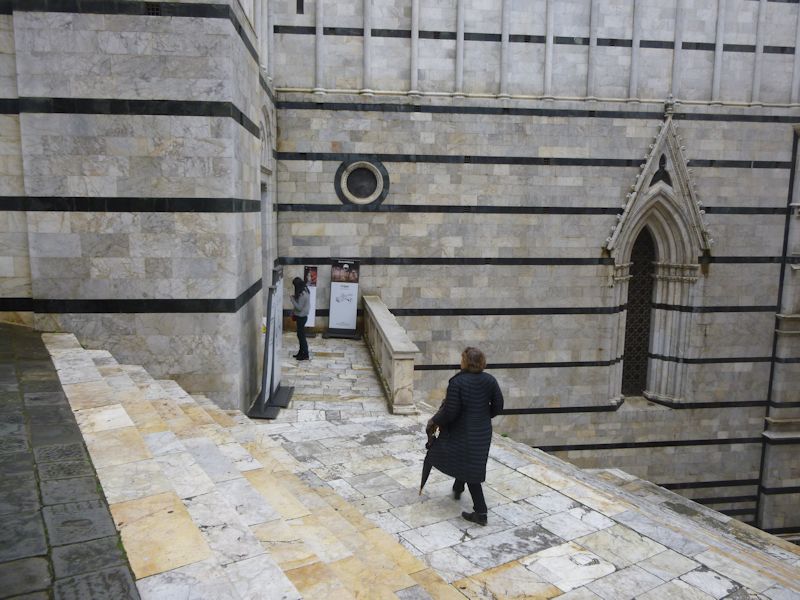
Halfway down the stairs, we find what they refer to as the Crypt, improbably stuck into the jumble of ancient constructions.

The crypt was only discovered in 1999; it was built at about the same time as the cathedral but used mainly for storage rather than for serious crypt-work, and may have served rather as a narthex for people not admitted amongst the general congregation, but when the Baptistry was constructed downstairs it was filled in and abandoned.

The frescoes are unattributed but very old, and there are deep pits into the lowest level of the cathedral foundations.

At the bottom of the stairs behind the cathedral, however, here's the Baptistry, the Battistero di San Giovanni, built between 1316 and 1325 by Camaino di Crescentino.

An amazing place. The hexagonal font in the centre was made between 1417 and 1431 by Donatello amongst other notable mostly Sienese sculptors, including Jacopo della Quercia, who'd earlier made the huge fountain in the Piazza del Campo (below), and much earlier in his career, the beautiful sarcophagus of Ilaria del Carretto (Mrs Paolo Guinigi) in Lucca.
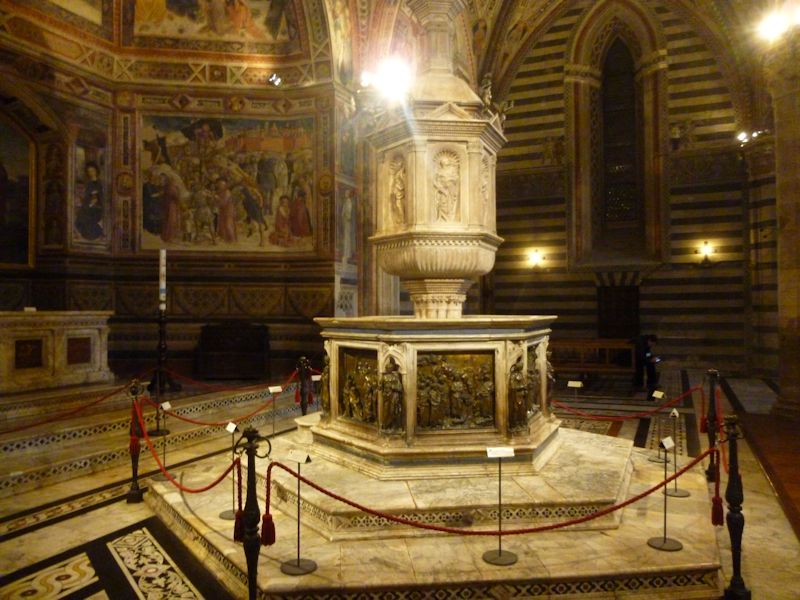

Most of the frescoes around the walls are by Vecchietta and his friends during the period 1447-1450.

The "Birth of John the Baptist", by Giovanni di Turino
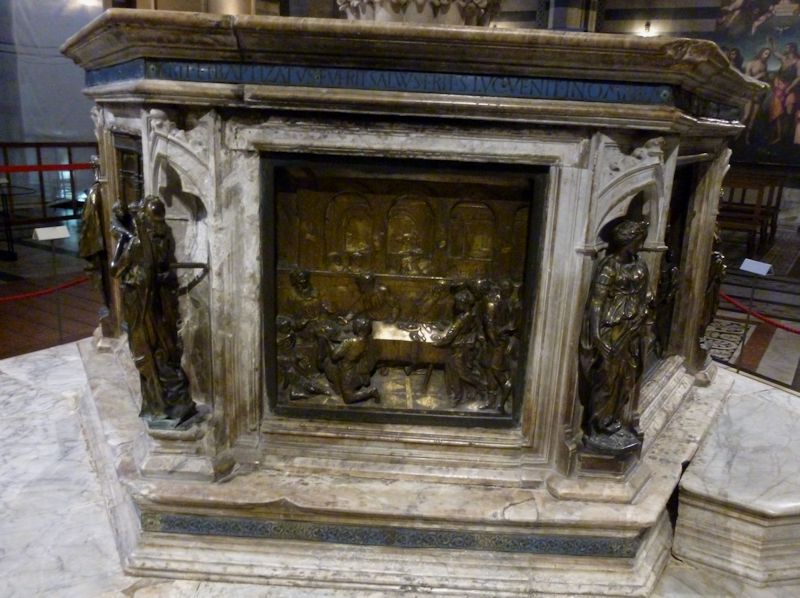
The panel of the "Head of the Baptist presented to Herod" (a.k.a. 'The Feast of Herod'), by Donatello, his only panel of the six
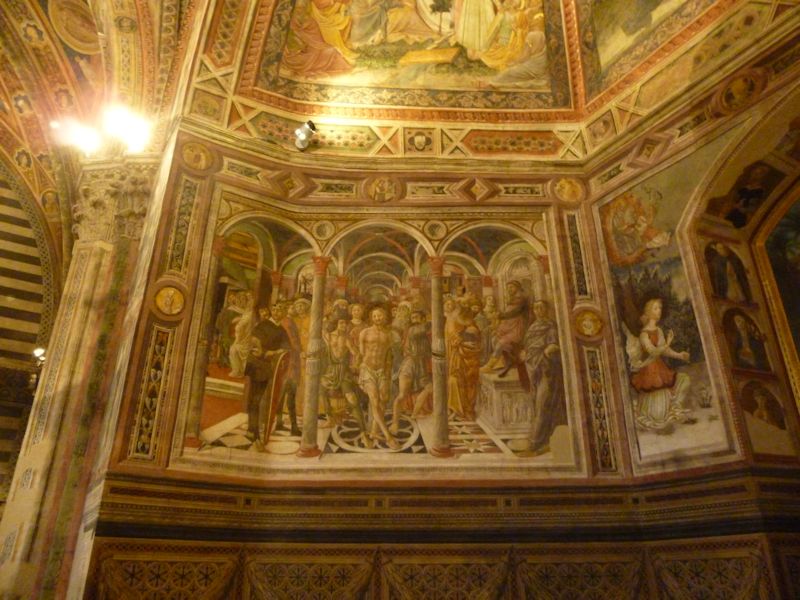
The Flagellation
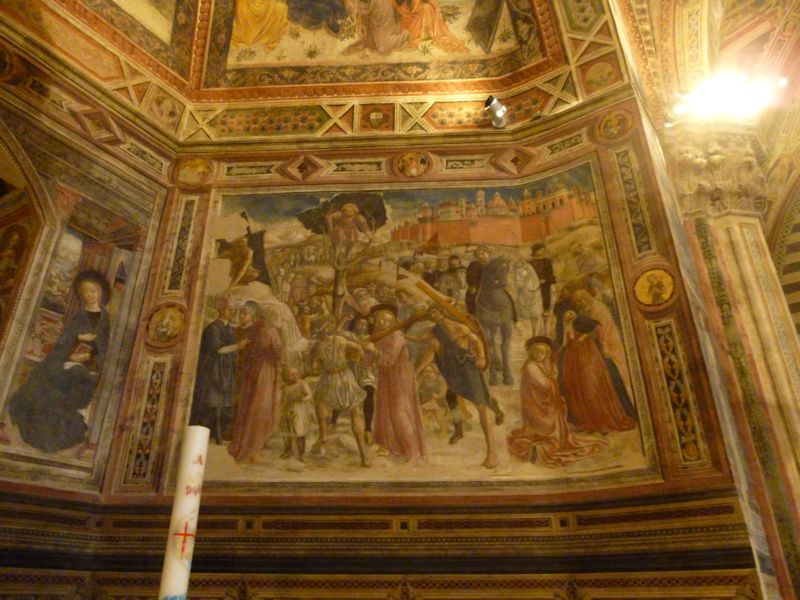
The Road to Calvary
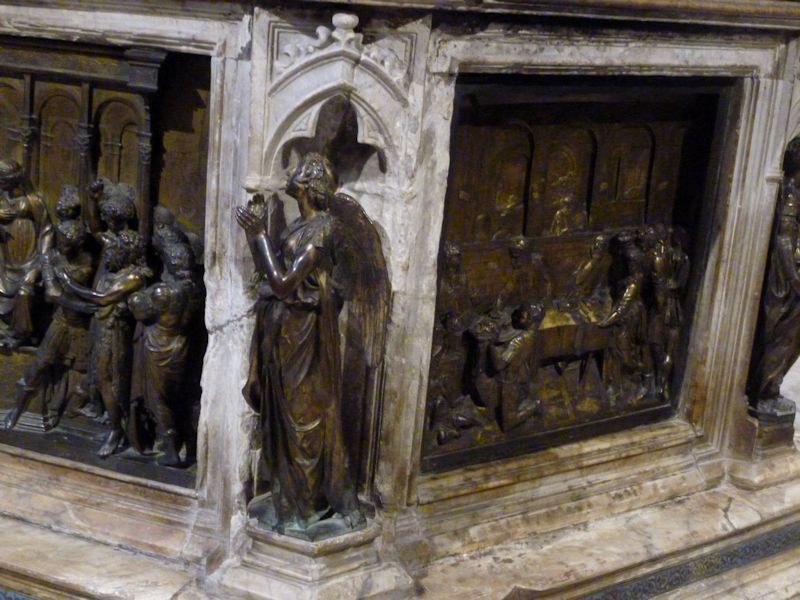
Donatello's "Hope", 1427
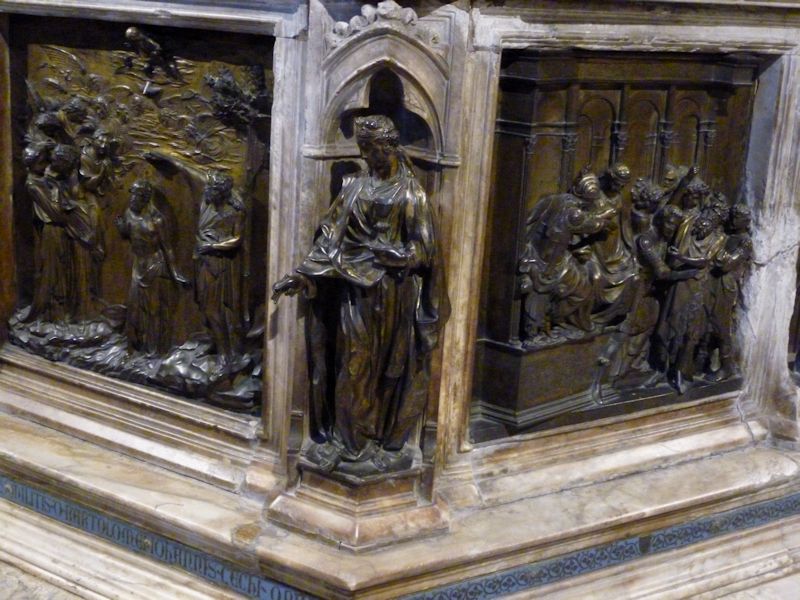
Donatello's "Faith", same year. These are his two contributions to the six figures around the corners of the base.

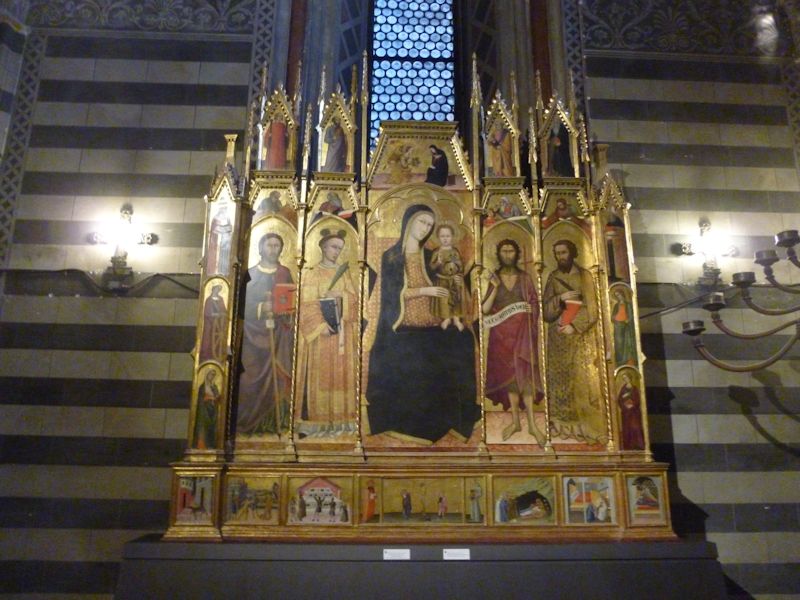
Madonna with baby and saints, by Andrea Vanni (called the Polyptych of San Stefano, as it's meant to be housed in the Sienese church of Santo Stefano alla Lizza; perhaps it's on loan here)
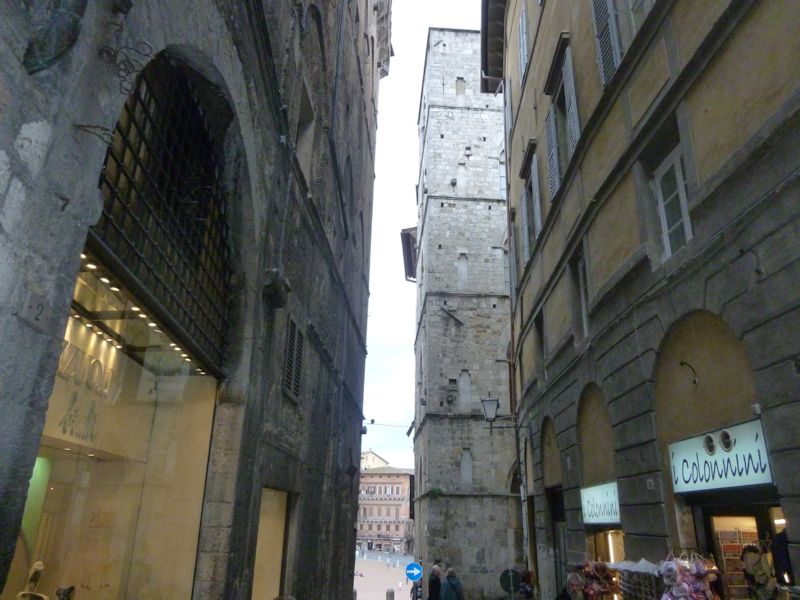
Back out on the streets
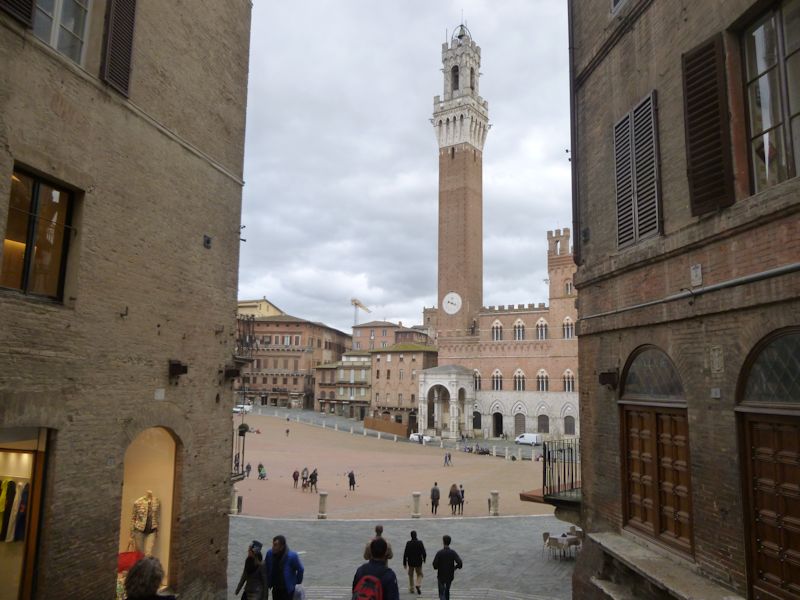
Down to the Piazza del Campo
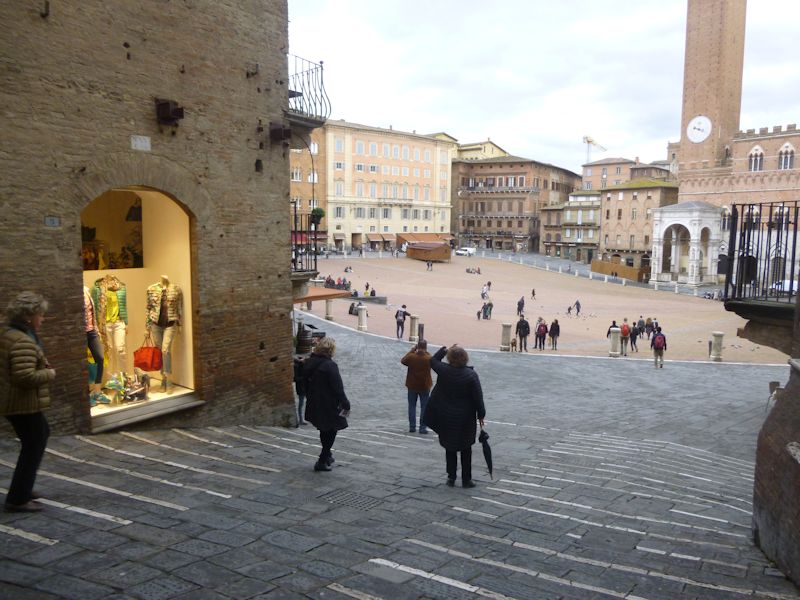
The main square of historic Siena, originally the central marketplace, paved over in 1349 in nine sections of red brick

It's still, even in blustery early March, the social centre of the old city

The oligarchic governing body of the Noveschi ("the Nine") commissioned the work, and the nine sections of brick radiating out from the main water drain in front of the Palazzo Pubblico are thought to symbolize the benevolent and enlightened rule of the Nine.
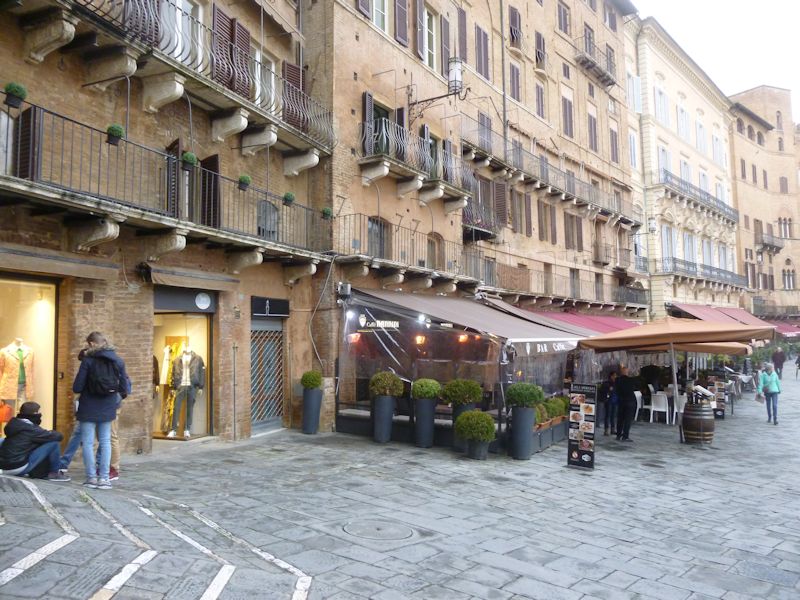
Rows of restaurants, snack bars, and ice cream shops
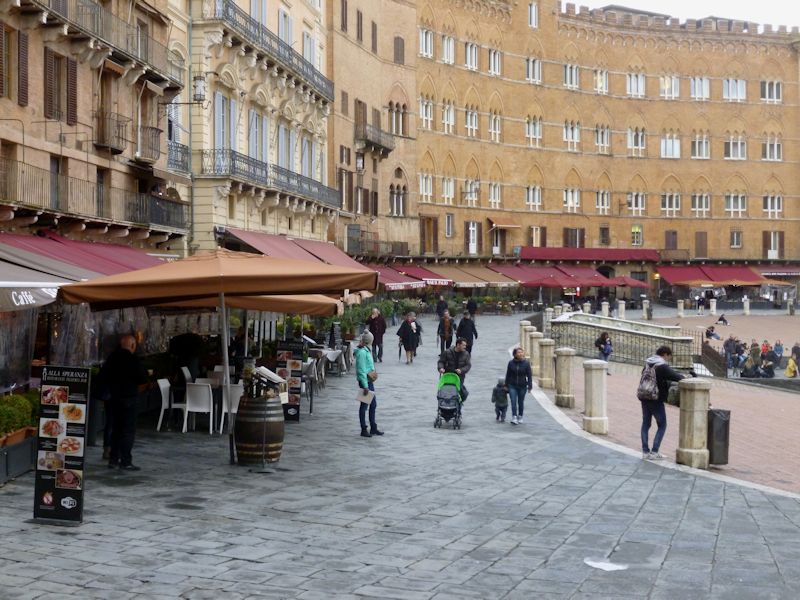
The rim around the shell-shaped brickwork is the venue for the twice-annual Palio di Siena horse race (July and August), with ten riders representing some of the traditional wards of the city dashing bareback three times round this by no means symmetrical sidewalk (covered with dirt for the occasion).
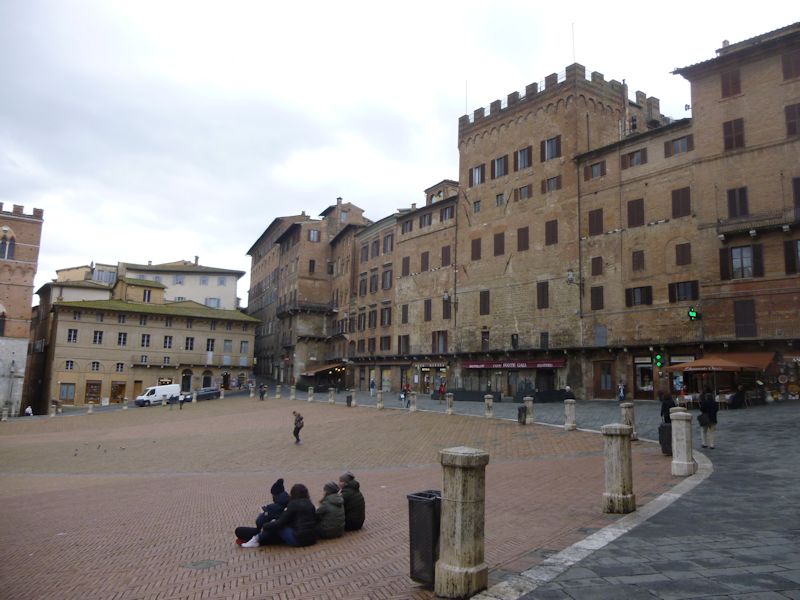
They say that, even today, some of the horses cross the finish line with no riders on them anymore. The various palazzi around the square were owned by the great ruling families of the 14th century, including the Piccolomini and Saracini, but unlike many northern Italian cities at the time, Siena had a legal prohibition against building anything significantly higher than the neighbors, thus avoiding the traditional arms race of huge family defensive towers all over town, intimidating everybody, which then had to be slighted or shortened by later, more stable administrations.

The Palazzo Pubblico, or city hall, with a stone base and brickwork above, was begun in 1297 to accommodate the republican administration of the podestà and the Council of Nine. The Torre del Mangia (allegedly an abusive pun on the name of its first bellringer) was built in the decade 1338-1348 and was the tallest or one of the tallest civic towers in Italy at the time. The loggia at the top was added in 1352 to commemorate the end of the Black Death, by the surviving half of the population presumably; the clock was added in 1360.

The Cappella di Piazza, also built to thank God or the Virgin or somebody for sparing some of the citizens from the Plague.
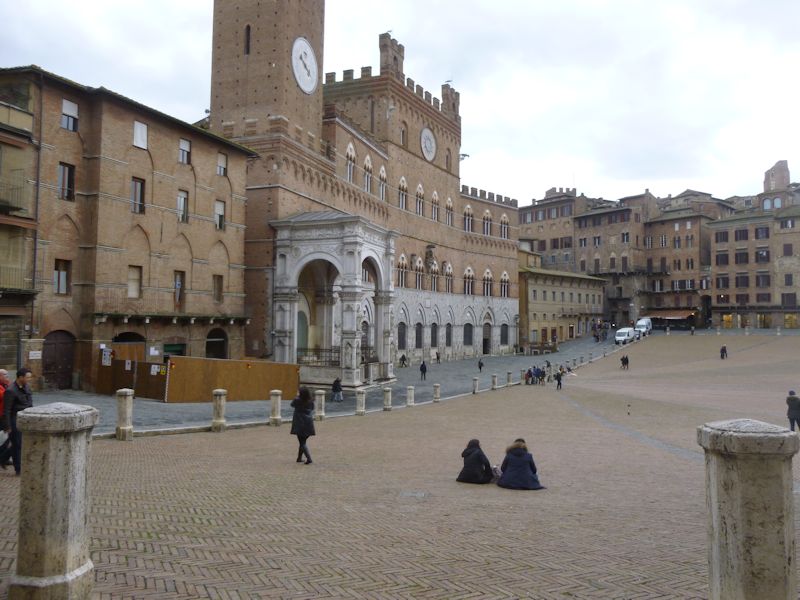
The Palazzo Pubblico houses the main art museum and an esteemed collection of frescoes throughout the building, but it's too late in the day for us this time.
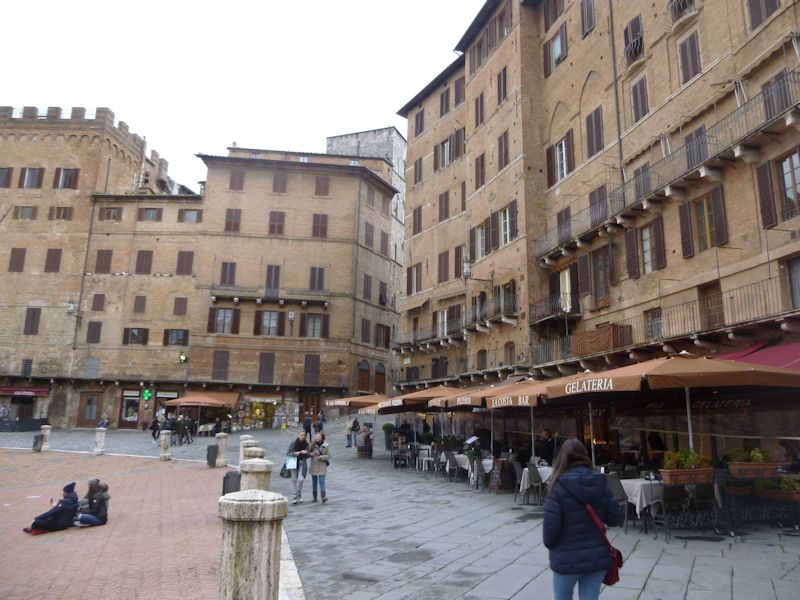

Water was piped into the city centre by a system of conduits finished in 1342, popping out in fountains in the various neighborhoods, but especially here in the Campo. In 1419, however, the city hired Jacopo della Quercia to invent a nice new one, and he did, in which he ventured to include the first two female nudes in an Italian public place (we're told) since classical times, excepting assorted Eves or Penitent Magdalenes

Called the Fonte Gaia or Fountain of Joy, Quercia's non-biblical nudes caused a bit of a stir then, but nothing like in the 19th century, when his originals were moved off to a less public venue, and copies of his works were stuck in here in 1866. Minus the two nudes.
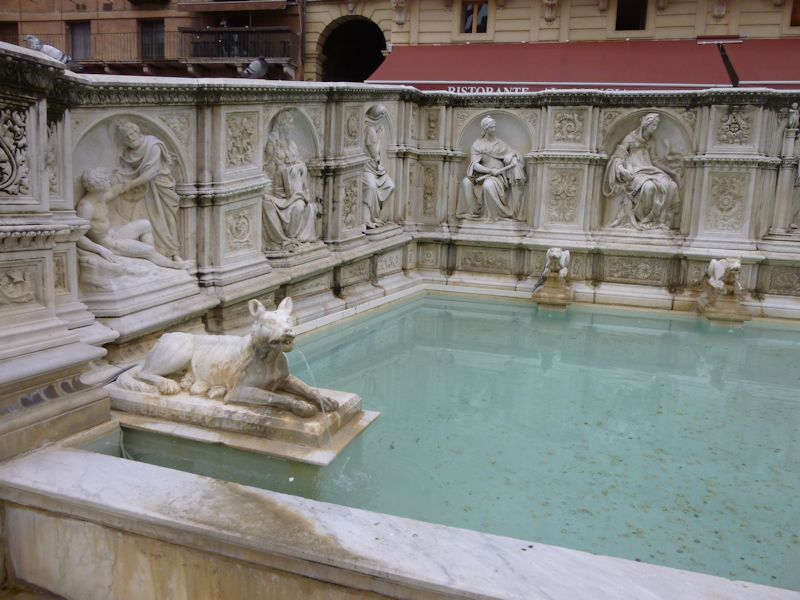
Everything else seems in order, though, and suitably clothed. Wait, that guy on the left . . .

The belltower of the Duomo looming over the Piazza del Campo in a drizzly rain

We're off now alas.

The Eater's Tower in the Piazza del Campo, seen from one of the eleven streets radiating out of the square
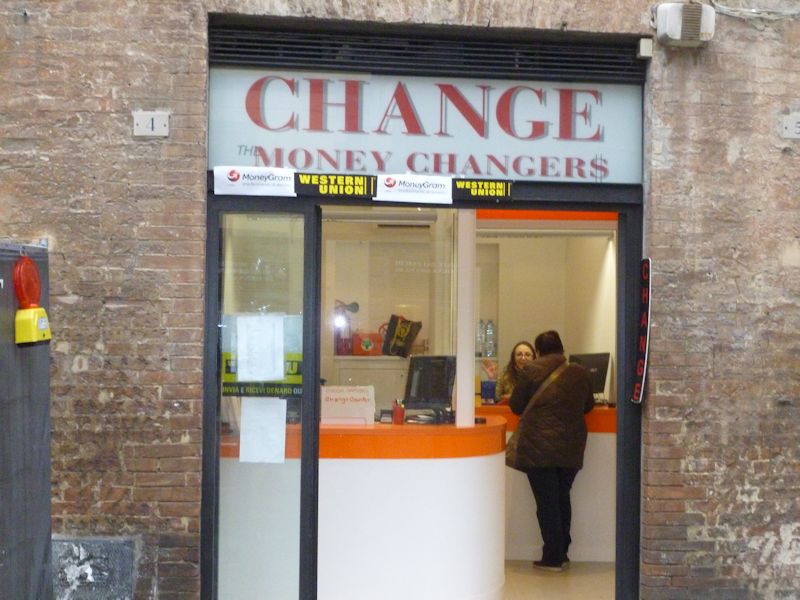
The Money Changers down the street from the Temple. The clerk was waving in an exuberantly friendly manner.
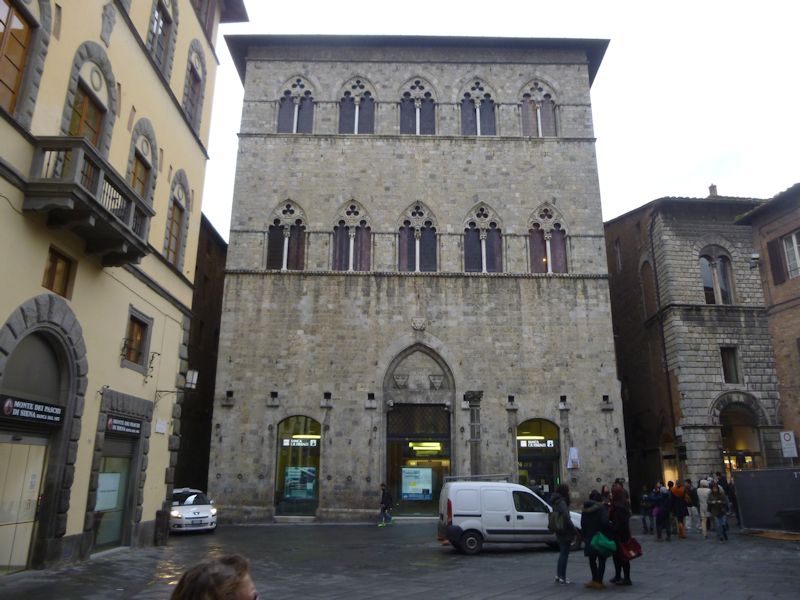
We're retracing our steps towards the Piazza Matteoti

And, after forgetting our umbrella in a coffee shop . . .
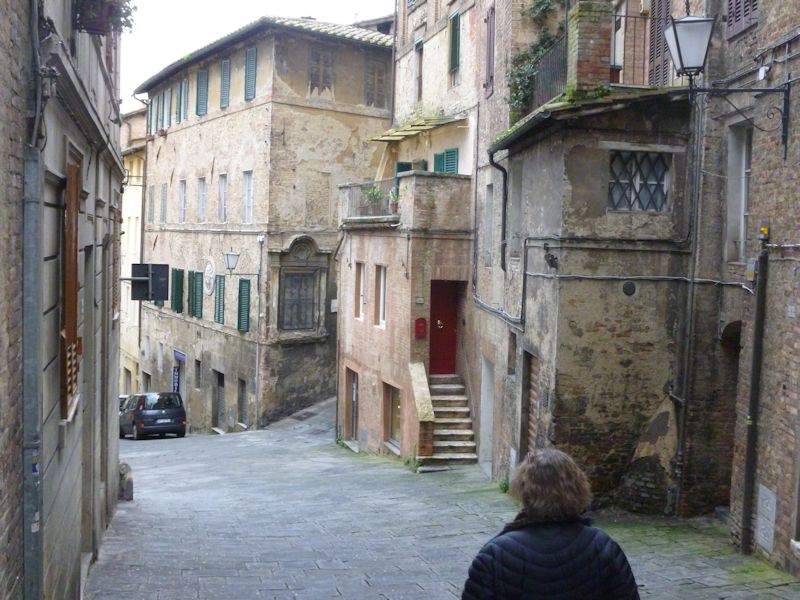
. . . back down the mountain we go.
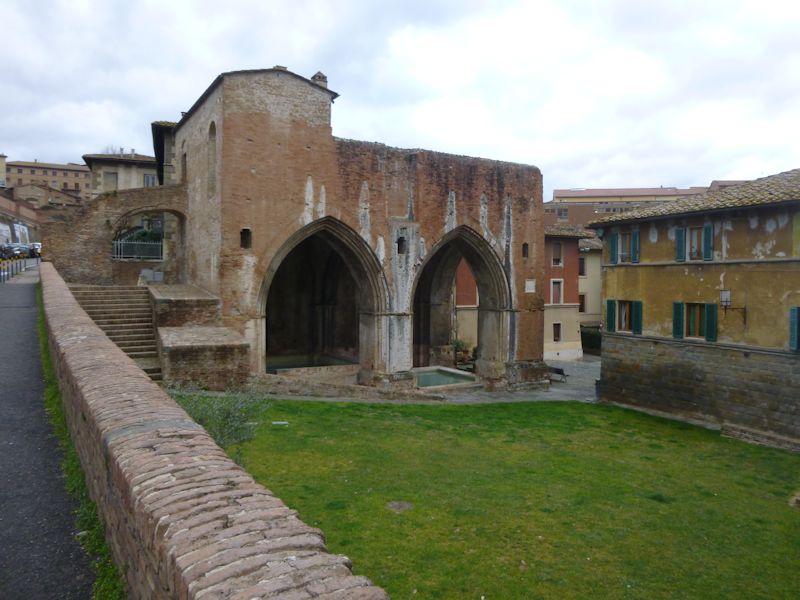
Ruins of something or other outside our parking garage

At the end of the day, it's still raining in Arezzo. Tomorrow we're off to Cortona with a look-in, or look-outside, at the Castello di Montecchio, once the comfy home of the formidable Sir John Hawkwood, the 14th century precursor of the Blackwater mercenary company.
        
      

 Feedback
and suggestions are welcome if positive, resented if negative, Feedback
and suggestions are welcome if positive, resented if negative,  .
All rights reserved, all wrongs avenged. Posted 20 April 2015. .
All rights reserved, all wrongs avenged. Posted 20 April 2015.
|
 Dwight Peck's personal website
Dwight Peck's personal website
































































